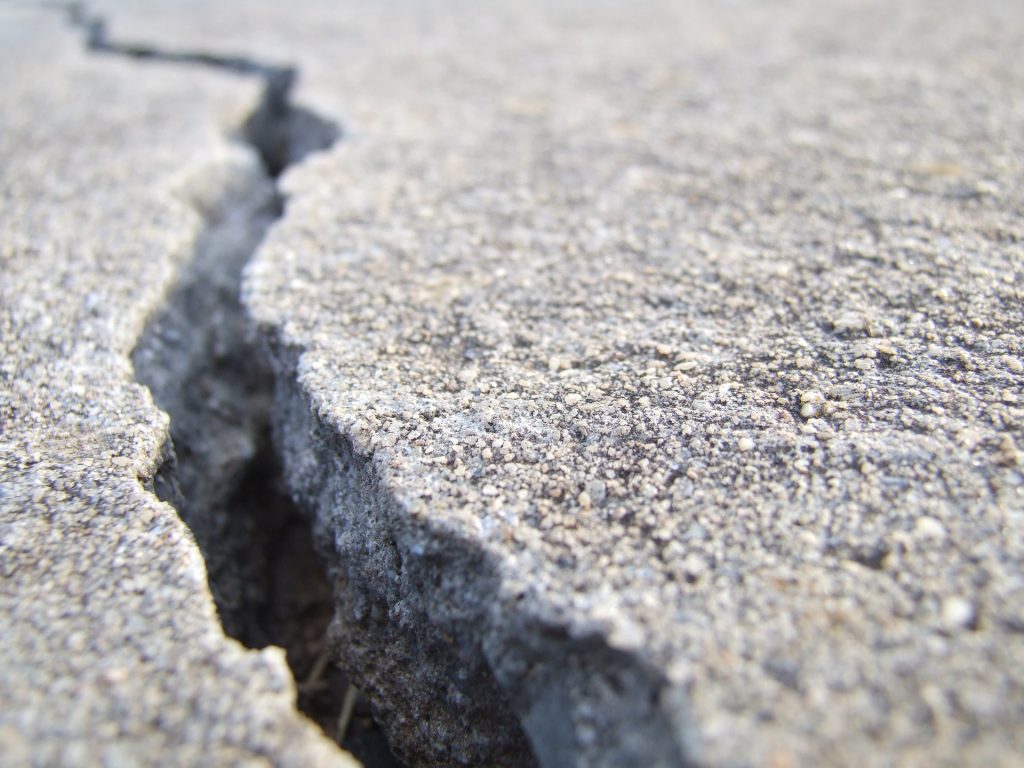How to Repair Cracked Concrete
Narrow cracks are best repaired with a concrete caulk or liquid filler. To repair a wider crack in the concrete you will need to chisel it.

Nowadays, most owners of houses have concrete sidewalks on their property. Chances are that sooner or later this sidewalk will end up developing small cracks, holes and gaps that will be of need of repairing. Although concrete is a durable material, many outside factors can lead to damage. Growing roots tend to create cracks and push the sidewall out of alignment. Other factors are the cold temperatures and ice that lead to damage and create wide and small cracks in the concrete. Tchis can not only be a safety hazard but can also compromise the appeal of your property. It is good to do the necessary repairs sooner rather than later. This might seem like a difficult task but in fact is something that almost anyone can do.
Concrete is made by mixing cement, water, coarse and fine aggregates, and occasionally, admixtures. Getting the right mixt of water and concrete is extremely important for the strength of the final product and its drying time. The cement powder, mixed with the water, should create a paste. The paste acts as glue and holds the aggregates together. Aggregates are two basic types: coarse (crushed rock, gravel, or screenings) and fine (fine and coarse sands and crusher fines).There are a lot of different types of concrete out there that are used for different application – water resistant, fast set, high-strength, reinforced with fiberglass, etc. It is best to choose the one that is recommended for your project.
Concrete surfaces are best repaired with a concrete patching compound. They have a texture similar to grout and can be smoothed and textured with a broom to achieve a nice blend with the older concrete around the crack. It is highly likely that the old color won’t match perfectly the new one. However, this can be fixed by painting the surface with the recommended concrete paint.
There are two types of sidewall cracks – narrow and wider.
How to Repair Narrow Concrete Cracks?
Narrow cracks are best repaired with a concrete caulk or liquid filler. First, you have to remove any loose debris from the crack using a broom or a wire brush. For very small hairline cracks it is best to use a caulk gun, loaded with a masonry crack filler to fill the crack. Or you can use a vinyl concrete patching compound and smooth it with a putty knife or trowel. In this case, repair caulk and crack filler usually are not effective due to the fact that caulk tends to peel off of the surface with time.
On the other hand, narrow cracks can also be quite deep, extending through the entire thickness of the concrete. Therefore, it is good to start with foam backer rod which can be stuffed into the crack in order to create a base and hold the material that is going to be applied on top of it. Stuff the backer rod into the crack with a small and narrow tool and apply the repair material afterwards, following the directions of the manufacturer.
How to Repair Wide Concrete Cracks?
To repair a wider crack in the concrete you will need to chisel it with a mall sledgehammer or masonry chisel in order to wider the base of the crack. This will help you get rid of any loose material in the crack. Similar to narrow cracks, the first thing you have to do is carefully clean the debris from the crack using a wire brush. You could also use a garden hose or spray nozzle. It is important to let the surface dry enough that it doesn’t have any puddles of water.
After you have cleaned the crack thoroughly, mix the concrete patching compound following the manufacturer’s instructions. Then, fill it with a vinyl patching mix and a trowel. Stab the trowel into the compound in order to remove any air pockets and to help lodge the patching material deep into the crack. After you have filled the crack, smooth the surface of the patch using a trowel and blend the compound into the surrounding concrete. You can use a dry paint brush to brush the surface and texture it in order to match the old concrete. If desired, paint or seal the patch and the area that surrounds it using the recommended products.
